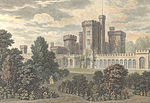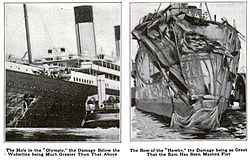Norris Castle

Norris Castle is located on the Isle of Wight. It was designed by James Wyatt for Lord Henry Seymour. The estate adjoins Osborne House, country home to Queen Victoria. On the other side of Norris Castle sits the Spring Hill estate, bought by William Goodrich in 1794. Norris Castle was built in 1799 and sits in 225 acres of land, with a mile of waterfront. The Castle is a Grade I listed building. The parks and gardens at Norris Castle are the Isle of Wight's only Grade I landscape listed by Historic England. The landscape at Norris Castle is thought to have been designed in 1799 by Humphry Repton, and it includes a castellated walled garden.Despite its grandeur, the castle's condition has long suffered due to lack of funding for its upkeep.At the present time, the castle is closed to the public, awaiting restoration.
Excerpt from the Wikipedia article Norris Castle (License: CC BY-SA 3.0, Authors, Images).Norris Castle
Norris Drive,
Geographical coordinates (GPS) Address External links Nearby Places Show on map
Geographical coordinates (GPS)
| Latitude | Longitude |
|---|---|
| N 50.763056 ° | E -1.270556 ° |
Address
Norris Castle
Norris Drive
PO32 6AZ , Osborne
England, United Kingdom
Open on Google Maps











